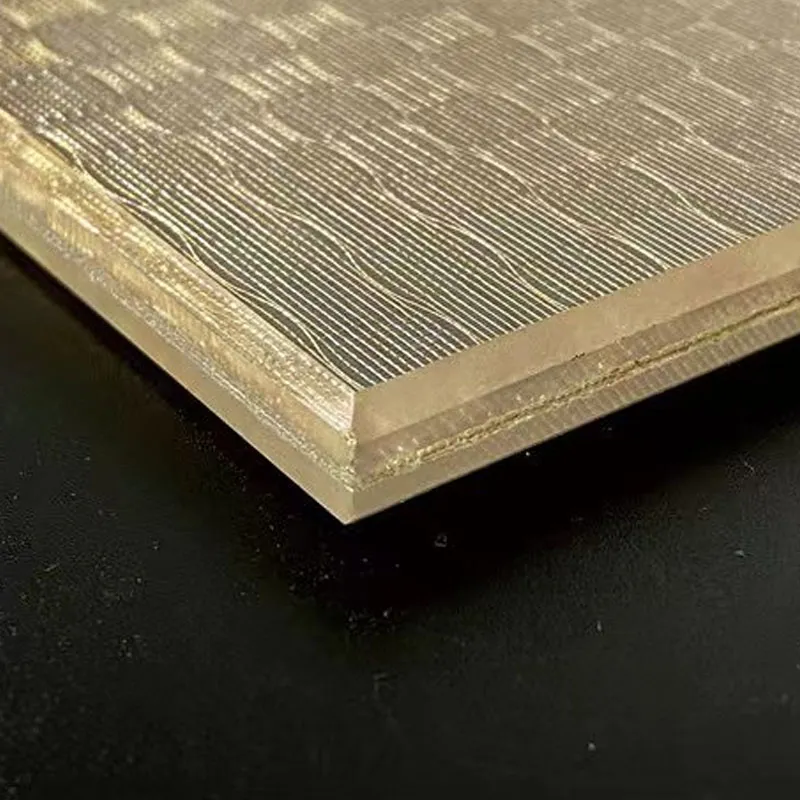The Benefits and Applications of Tinted and Reflective Glass
In the ever-evolving world of architecture and design, glass continues to play a pivotal role, providing both aesthetic appeal and functional benefits. Among the various types of glass available, tinted and reflective glass stands out for its unique properties that enhance both the appearance and performance of buildings. This article delves into the advantages, applications, and considerations of tinted and reflective glass, showcasing why it has become a preferred choice in modern construction.
Understanding Tinted and Reflective Glass
Tinted glass is produced by adding various metal oxides to the glass during its manufacturing process. This special treatment results in a material that can reduce glare, control solar heat gain, and enhance privacy, all while maintaining clarity and visibility. The tinting comes in various shades, enabling architects and builders to choose the right level of opacity to match their design intentions.
Reflective glass, on the other hand, typically features a thin metallic coat applied to one side, allowing it to reflect a significant portion of sunlight. This reflective surface acts like a mirror, minimizing heat absorption and providing further control over solar energy. The combination of tinted and reflective properties enables these types of glass to offer superior performance in energy efficiency and aesthetics.
Benefits of Tinted and Reflective Glass
1. Energy Efficiency One of the most notable advantages of tinted and reflective glass is its ability to significantly improve a building's energy efficiency. By reducing solar heat gain, these glasses minimize the need for air conditioning and cooling systems, leading to lower energy consumption and reduced utility costs.
2. Glare Reduction Excessive sunlight can create uncomfortable glare in indoor spaces, making it difficult for occupants to work or relax. Tinted glass effectively reduces glare, improving the comfort level for everyone inside the building. This property is particularly beneficial in commercial spaces, where glare can impede productivity.
3. UV Protection Tinted and reflective glass can block a substantial percentage of harmful ultraviolet (UV) rays. This protection is crucial for preserving interior furnishings, artworks, and flooring, preventing fading and prolonging the lifespan of these materials.
tinted and reflective glass
4. Privacy and Aesthetics The use of tinted or reflective glass enhances privacy without completely obstructing the view. Reflective glass offers a mirror-like finish that allows occupants inside to see outside without revealing their visibility from the outside. This feature is especially desirable in urban environments where buildings are closely situated.
5. Design Flexibility Architects appreciate the design flexibility offered by tinted and reflective glass. Available in various colors, shades, and coatings, it can be tailored to meet specific aesthetic goals while still delivering the functional benefits required for energy efficiency and comfort.
Applications of Tinted and Reflective Glass
The versatility of tinted and reflective glass makes it suitable for various applications. In commercial buildings, such as office towers, hotels, and retail storefronts, these types of glass are often used to create stunning facades that catch the eye while enhancing energy performance. Residential buildings, particularly those with large windows or glass facades, also benefit from these materials, providing homeowners with comfort and aesthetics without sacrificing style.
Moreover, tinted and reflective glass is frequently utilized in automotive design, contributing to the look of modern vehicles while offering drivers protection from the sun's heat and glare. This application further underscores the importance of glass in everyday life beyond conventional buildings.
Considerations and Challenges
While tinted and reflective glass offers numerous advantages, it also presents challenges. Careful consideration of orientation and local climate is essential to maximizing performance. Additionally, over-tinting can lead to excessively dark interiors, which may not be suitable for all environments. Thus, the decision to use tinted or reflective glass should involve thorough planning and consultation with architects and engineers.
Conclusion
Tinted and reflective glass represents a marriage of form and function, providing architects, builders, and occupants with a multitude of benefits. As building designs continue to evolve, the applications of this versatile glass will undoubtedly expand, paving the way for more energy-efficient, comfortable, and aesthetically pleasing spaces. As we embrace innovative design solutions, tinted and reflective glass remains a vital component in the pursuit of sustainable architecture.
 Afrikaans
Afrikaans  Albanian
Albanian  Amharic
Amharic  Arabic
Arabic  Armenian
Armenian  Azerbaijani
Azerbaijani  Basque
Basque  Belarusian
Belarusian  Bengali
Bengali  Bosnian
Bosnian  Bulgarian
Bulgarian  Catalan
Catalan  Cebuano
Cebuano  Corsican
Corsican  Croatian
Croatian  Czech
Czech  Danish
Danish  Dutch
Dutch  English
English  Esperanto
Esperanto  Estonian
Estonian  Finnish
Finnish  French
French  Frisian
Frisian  Galician
Galician  Georgian
Georgian  German
German  Greek
Greek  Gujarati
Gujarati  Haitian Creole
Haitian Creole  hausa
hausa  hawaiian
hawaiian  Hebrew
Hebrew  Hindi
Hindi  Miao
Miao  Hungarian
Hungarian  Icelandic
Icelandic  igbo
igbo  Indonesian
Indonesian  irish
irish  Italian
Italian  Japanese
Japanese  Javanese
Javanese  Kannada
Kannada  kazakh
kazakh  Khmer
Khmer  Rwandese
Rwandese  Korean
Korean  Kurdish
Kurdish  Kyrgyz
Kyrgyz  Lao
Lao  Latin
Latin  Latvian
Latvian  Lithuanian
Lithuanian  Luxembourgish
Luxembourgish  Macedonian
Macedonian  Malgashi
Malgashi  Malay
Malay  Malayalam
Malayalam  Maltese
Maltese  Maori
Maori  Marathi
Marathi  Mongolian
Mongolian  Myanmar
Myanmar  Nepali
Nepali  Norwegian
Norwegian  Norwegian
Norwegian  Occitan
Occitan  Pashto
Pashto  Persian
Persian  Polish
Polish  Portuguese
Portuguese  Punjabi
Punjabi  Romanian
Romanian  Russian
Russian  Samoan
Samoan  Scottish Gaelic
Scottish Gaelic  Serbian
Serbian  Sesotho
Sesotho  Shona
Shona  Sindhi
Sindhi  Sinhala
Sinhala  Slovak
Slovak  Slovenian
Slovenian  Somali
Somali  Spanish
Spanish  Sundanese
Sundanese  Swahili
Swahili  Swedish
Swedish  Tagalog
Tagalog  Tajik
Tajik  Tamil
Tamil  Tatar
Tatar  Telugu
Telugu  Thai
Thai  Turkish
Turkish  Turkmen
Turkmen  Ukrainian
Ukrainian  Urdu
Urdu  Uighur
Uighur  Uzbek
Uzbek  Vietnamese
Vietnamese  Welsh
Welsh  Bantu
Bantu  Yiddish
Yiddish  Yoruba
Yoruba  Zulu
Zulu 

